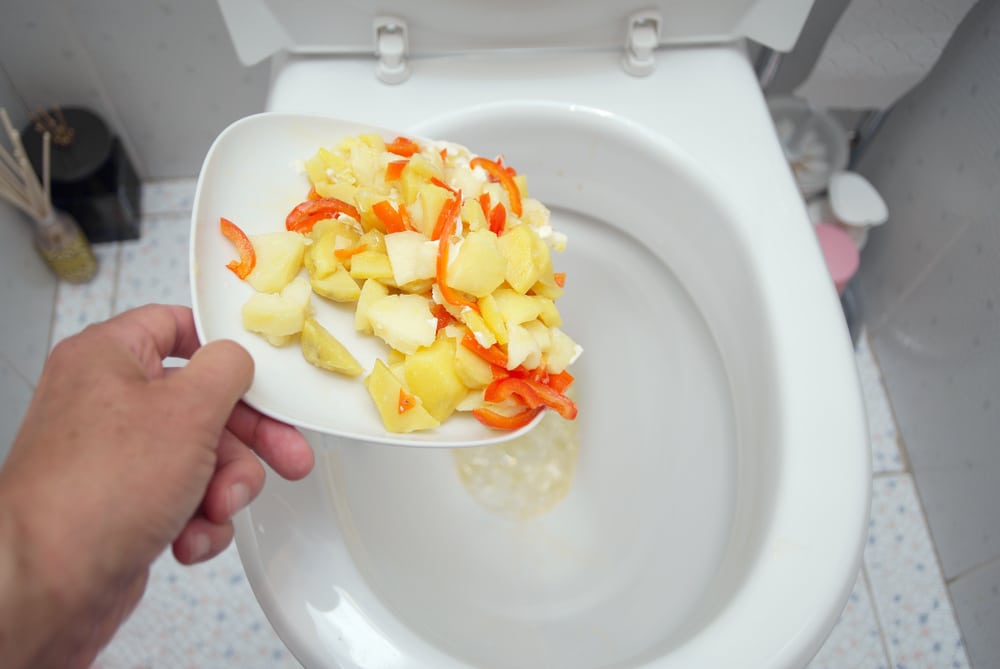The article author is making a number of great points on Flushing Food Down the Toilet? in general in this great article following next.

Intro
Many people are often confronted with the dilemma of what to do with food waste, especially when it concerns leftovers or scraps. One common question that arises is whether it's okay to purge food down the commode. In this post, we'll explore the reasons why people may take into consideration purging food, the repercussions of doing so, and different techniques for correct disposal.
Reasons that people may consider flushing food
Absence of awareness
Some people might not know the prospective harm caused by flushing food down the bathroom. They may erroneously believe that it's a safe technique.
Convenience
Purging food down the commode might feel like a quick and simple option to getting rid of undesirable scraps, specifically when there's no neighboring garbage can available.
Laziness
In some cases, people might just choose to flush food out of large negligence, without thinking about the consequences of their actions.
Consequences of flushing food down the bathroom
Ecological effect
Food waste that ends up in waterways can add to air pollution and damage water ecosystems. In addition, the water utilized to flush food can strain water resources.
Plumbing problems
Flushing food can cause clogged pipes and drains pipes, creating pricey pipes fixings and hassles.
Kinds of food that should not be purged
Coarse foods
Foods with fibrous textures such as celery or corn husks can obtain tangled in pipes and create blockages.
Starchy foods
Starchy foods like pasta and rice can absorb water and swell, leading to clogs in pipes.
Oils and fats
Greasy foods like bacon or cooking oils should never be purged down the commode as they can strengthen and cause obstructions.
Correct disposal approaches for food waste
Using a waste disposal unit
For homes equipped with waste disposal unit, food scraps can be ground up and flushed through the plumbing system. Nonetheless, not all foods are suitable for disposal in this fashion.
Recycling
Certain food product packaging materials can be recycled, decreasing waste and lessening environmental effect.
Composting
Composting is an environmentally friendly method to get rid of food waste. Organic materials can be composted and used to enrich dirt for gardening.
The importance of correct waste administration
Decreasing ecological damage
Correct waste administration practices, such as composting and recycling, assistance minimize contamination and preserve natural resources for future generations.
Shielding plumbing systems
By preventing the method of flushing food down the commode, property owners can prevent costly pipes repair work and preserve the stability of their plumbing systems.
Conclusion
To conclude, while it may be tempting to purge food down the bathroom for benefit, it is necessary to recognize the possible consequences of this action. By adopting appropriate waste administration techniques and taking care of food waste properly, people can contribute to much healthier pipes systems and a cleaner environment for all.
FLUSH FOOD DOWN THE TOILET?
FLUSHING FOOD CAN CAUSE BLOCKED DRAINS IN YOUR HOME
All of the plumbing fixtures in your home are connected to the same sewer pipe outside of your home. This outdoor sewer pipe is responsible for transporting all the wastewater from your home to the Council sewer mains. Even small pieces of food that go down the kitchen sink can cause problems for your sewer. It should therefore be obvious that flushing larger bits of food, such as meat, risks a clog in either the toilet itself or the sewer pipes. Flushing greasy food is even more problematic because oil coagulates when it cools, coating the interior lining of your pipes.
THE TOILET IS NOT A BIN
Food isn’t the only thing that people shouldn’t be flushing down the toilet. People use the toilet to dispose of all kinds of things such as tampons, makeup wipes, dental floss, kitty litter and even underwear. Water goes to great lengths to educate residents about the high costs and stress placed on wastewater treatment systems simply from people flushing the wrong stuff down the toilet. It costs taxpayers millions of dollars each year, and homeowners thousands in blocked drain repairs.
FLUSHING FOOD IS A WASTE OF WATER
Flushing food is a waste of our most precious resource - water. In June this year Level 1 water restrictions were introduced to protect water supply from drought conditions. Much of New South Wales continues to be affected by prolonged drought with recent figures revealing up to 97 per cent of the state remains in drought. Depending on whether you have a single or dual flush toilet, every single flush uses between five and 11 litres of water. In the current climate this is a huge amount of water to be wasting on flushing food that should be placed in the bin (or better yet, the compost).
https://www.jabplumbingsolutions.com.au/blog/can-you-flush-food-down-the-toilet

I ran across that page about when doing a search on the search engines. In case you liked our page please make sure you remember to pass it around. We recognize the value of reading our article about .
Call Today